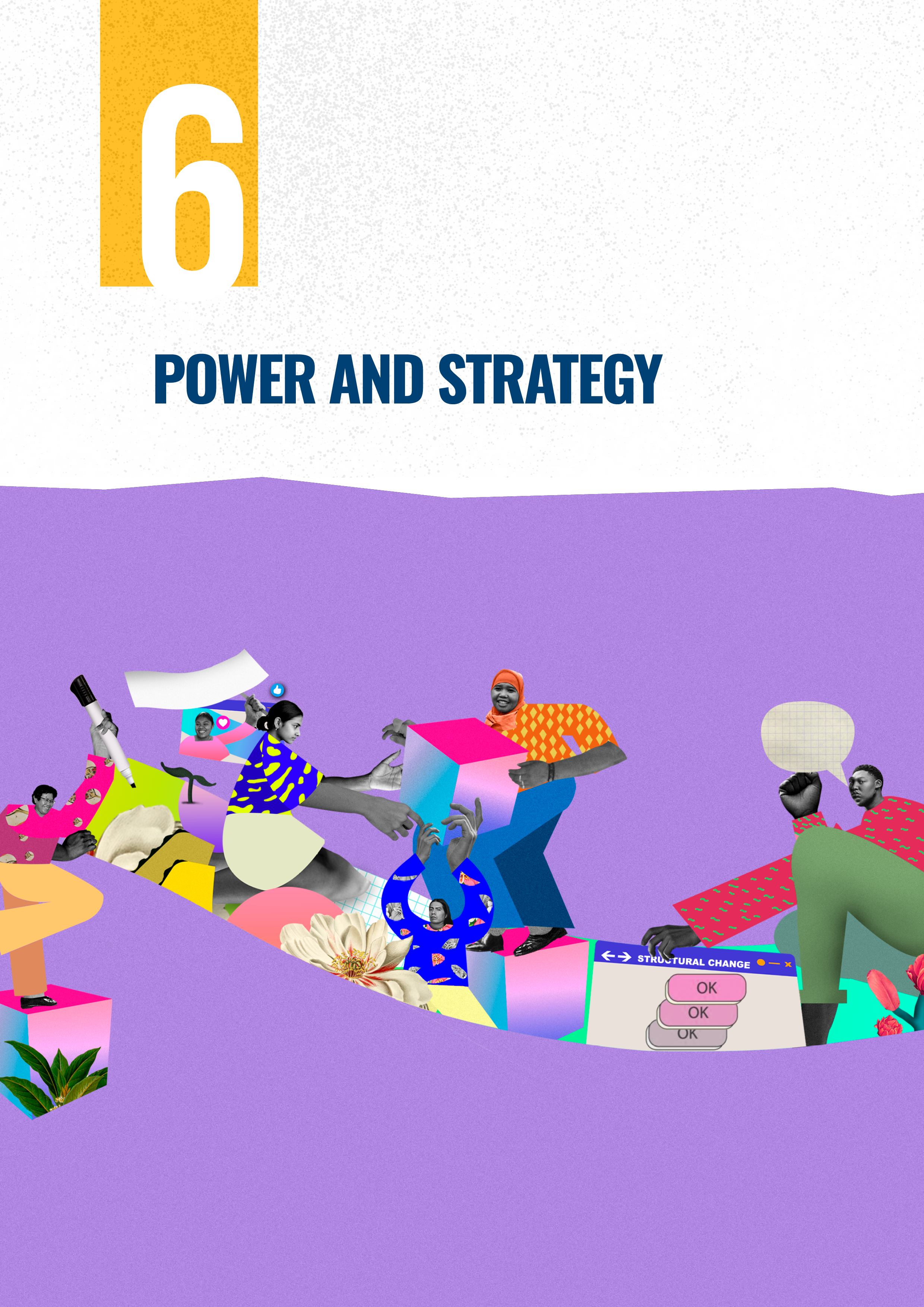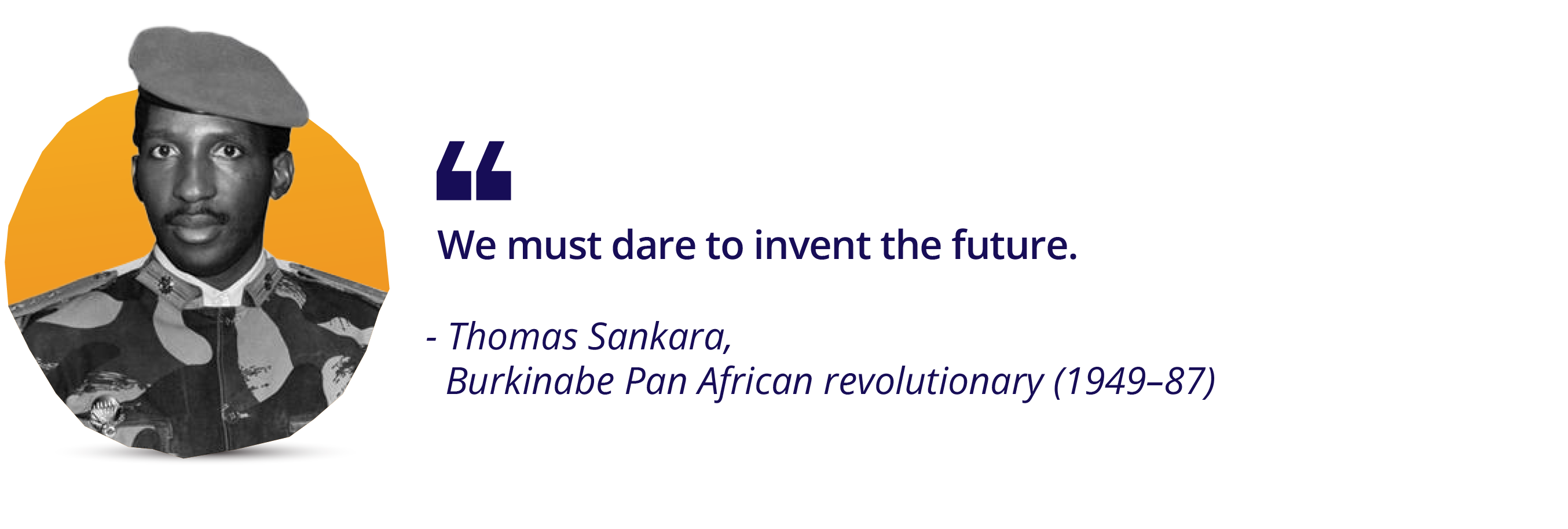Chapter 6: Power and Strategy

Download this chapter A4 size or Letter size.

This chapter makes the bridge from power analysis and other key processes outlined in the Guide to strategy. Strategy is a collaborative process that guides groups, organisations, and movements towards achieving systemic, structural, and material change for justice, equity, and wellbeing.
Power analysis is central to developing strategy, because it:
- Helps identify and assess who and what are at the root of systemic and structural inequities, injustices and violence we seek to address.
- Shows where and how to focus change efforts in a given context and moment while investing in the long-term power-building process.
- Locates and directs our organising and change work within the wider movement ecosystem.
- Invites us to build, mobilise, and exercise our power with others over time to make all that happen.
Strategy guides what we do (why, when, where, and with whom) but equally how we do it, so that we seed the change we want, embody our vision and values, and create an ever bigger and more inclusive ‘we’.
This chapter draws on a core set of ideas and covers five themes for approaching strategy.
Core Ideas
We begin by defining a set of core ideas that are used throughout the chapter. You may want to share this set of concepts and processes, relevant to all the themes in this chapter, with the people taking part in your process.
Theme 1: What is Strategy?
What are the key components of a social change strategy? What needs to be in place as a foundation for creating strategy? We begin by reviewing elements that we identified in the first five chapters of this Guide. Then we approach strategy with a movement-building lens; locate our actions within the context of a broader movement ecosystem; and identify opportunities for connections, alignment, coordination, and building ‘movement infrastructure’ around the agenda and vision we hold.
Theme 2: Connecting Analysis to Strategy
In Chapter 3: Making Sense of Power, we began to think about strategy using a power analysis. Here, we deepen that work by going back to the case study COPINH: Guardians of the River. We examine more closely who and what COPINH was up against in each of the four arenas of power, explore the implications for their strategic approach to resistance and advocacy, and look at how they built their power and cohesion. COPINH’s experience offers many lessons about the factors that shape strategic choices and the range of possible responses and tactics.
Theme 3: Context and Moment
As we discussed in Chapter 2, the specific context and moment shape strategic choices, pathways, and risks. The issues we seek to address, and our organisational capacity, resources, and relationships are also pivotal in determining how we move and what’s at stake. We discuss what factors matter, how they shape our strategies, and what strategies look like in repressive and crisis contexts.
Theme 4: Building and Exercising Power
Our greatest source of strength and legitimacy is our collective capacity to mobilise and exercise our power through organising, leadership development, and alliance-building over time. Catalysing our ‘connective tissue’ – from small groups to networks – is an essential strategy that involves many kinds of processes, possibilities and challenges. We make a distinction between organising and mobilising power and offer tools and methodologies for building power within, to, with and for.
Theme 5: Engaging and Resisting
Policy advocacy and lobbying are a primary focus of many civil society organisations. Yet engaging visible power may not always be effective in a given context or moment, and requires complementary tactics if it is to be effective. We offer tools and examples for deciding whether and where to engage in policy spaces, and when acts of resistance or creating autonomous spaces may be required – whether on their own, or as part of ‘inside-outside’ strategies.
_________________________________
